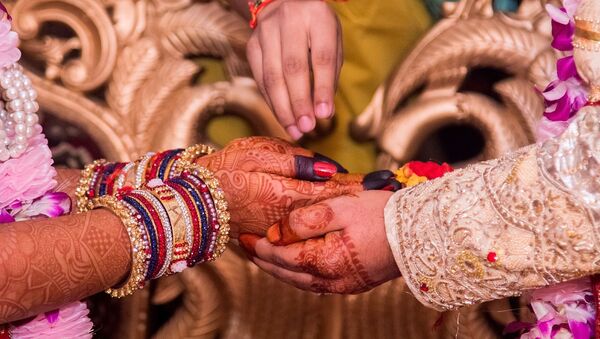Judges of a High Court in the Indian state of Uttar Pradesh were left stunned recently on discovering that a matrimonial dispute involving a Muslim couple had been bizarrely dealt with on the basis of the Hindu Marriage Act of 1955.
The Hindu Marriage Act of 1955 was intended to secure the rights of marriage for a bride and groom who are Hindu and are bound under the sacred bond of marriage under any ceremony. The law does not define the kind of ceremony to be performed since there are several ways a man and a woman may wed as per religious norms.
This act was floated after several cases were presented before the Indian courts where both men and women were petrified or humiliated under a fraud case in the name of marriage. This act is binding for any person belonging to the Hindu, Jain, Sikh and Buddhist community and is not Muslim, Christian, Parsi, or Jewish. This law is binding for any person who is Hindu by both birth and religion.
On the other hand, Muslims in India are governed by the Muslim Personal Law (Shariat) Application Act of 1937. This law deals with marriage, succession, inheritance, and charities among Muslims. There is another law called the Dissolution of Muslim Marriages Act f 1939 which specifically deals with Muslim women seeking divorce and also rights and provisions after being divorced by their husbands.
A two-judge division bench of the Allahabad High Court was told that under the Hindu Marriage Act of 1955, the husband had been asked to pay interim maintenance to his estranged wife. The couple has been living separately since 2015, Indian daily The Times of India reported.
In this particular case, the Muslim Personal Law (Shariat) Application Act of 1937 should have been applied instead of the Hindu Marriage Act of 1955.
In its order passed earlier this week, the High Court informed the chief justice of the “misdemeanour”.
The court stated it was astonished by the fact that the judge applying the Hindu Marriage Act to the case was a district judge, and was fully aware of which law to apply in which case.
Responding to Judge Manoj Kumar Shukla’s complaint that the High Court bench had unnecessarily summoned the latter said: “We are constrained to observe, that too, with a heavy heart and affliction, that the scene created by judicial officer Manoj Kumar Shukla inside the courtroom has diminished the image of judiciary…”
It further rejected Judge Shukla’s contention that the pressure of work leads to “such types of mistakes by a judicial officer”.
The High Court said a judge is duty-bound to apply the correct law.


